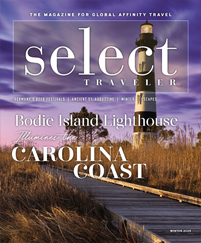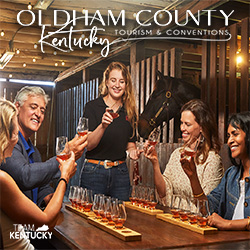Oklahoma City is a shining symbol of destination innovation.
Case in point: In the 1990s, the city’s leaders began a project to transform a blighted urban area into Bricktown, a recreation, dining and nightlife area that has become the signature of the city.
Since then, the city has constructed a convention center, sports arenas and the recently opened Scissortail Park. These modern developments encouraged more entertainment opportunities, which continue to grow each year.
Previous visitors have plenty of reasons to revisit Oklahoma City, with the soon-to-open First Americans Museum, the new arts space for the Oklahoma Contemporary Arts Center and the upcoming Coop Ale Works.
Scissortail Park
Proposed more than a decade ago, Scissortail Park officially opened 40 acres of urban oasis in September. With plans to eventually extend the park, the natural space will stretch from downtown to the shore of the Oklahoma River for an additional 30 acres.
Named after Oklahoma’s state bird, the scissortail flycatcher, Scissortail Park frames views of the city’s skyline. The $132 million park is connected from the north to the south by the Skydance Bridge.
Trails wind through the park past native prairie grasses, lush flower gardens and tree-lined walkways. A boathouse offers pedal boat, kayak and stand-up paddleboard rentals on a 3.7-acre lake.
The Love’s Travel Stops Stage will host a variety of concerts throughout the year, with space for up to 15,000 people on the Great Lawn. More activities are in the works with plans for a cafe, sports facilities and more naturalistic plantings.
“From a group perspective, there is a vast amount of space,” said Tabbi Burwell, senior manager of destination communications for Visit Oklahoma City. “Groups could join yoga in the mornings or plan a picnic there. The Oklahoma streetcar service runs right in front of the park. If a group wanted to take the streetcar around Oklahoma City from the park, they could.”
First Americans Museum
Few tribal nations originated in Oklahoma. Most were removed from their homelands and sent across the U.S. to what was considered Indian Territory before Oklahoma became a state in 1907. The upcoming First Americans Museum will tell the story of the 39 original and relocated tribes of Oklahoma.
Formerly known as the American Indian Cultural Center and Museum, the First Americans Museum has been in the works for over a decade. With plans to open in 2021, the museum will serve as a gateway that unifies tribes from the eastern and western United States.
The museum will sit on the banks of the Oklahoma River not far from downtown.
“It’s going to be an amazing experience,” said Burwell. “It will be like a homecoming for many Native Americans. There will be exhibits on display from their descendants they may have never seen before.”
At the Smithsonian Gallery, visitors can explore exhibits of 140 objects on long-term loan from the Smithsonian Institution’s National Museum of the American Indian. These items were collected in the late 19th and early 20th centuries and came from Oklahoman tribes.
The Tribal Nations Gallery will tell the history of each of the tribes by highlighting tribal origin stories and historical accounts. For an interactive experience, groups can walk through the Family Discovery Center. Exhibits for all ages provide hands-on activities that teach aspects of Native American culture.
Yet the museum will go beyond exhibits to include group tours and programs at the 200-seat multipurpose theater. Native dancers, workshops, cooking demonstrations and music events will provide memorable ways to interact with native culture.
“The full-service restaurant will serve indigenous foods from the tribes,” said Burwell. “It will be perfect for people looking for an experiential meal.”
Oklahoma Contemporary Arts Center
Artists in Oklahoma often look up for inspiration. The expansive and colorful Oklahoma sky makes appearances in many of the state’s artworks, including the architectural design of the new Oklahoma Contemporary Arts Center building.
Since the museum has outgrown its venue at the state’s fairgrounds, the museum officials wanted a structure that could expand the art museum’s gallery, educational and event space. Due to open sometime this year, the museum will house its contemporary collection and rotating exhibits in a 54,000-square-foot building in the heart of downtown.
Oklahoma City firm Rand Elliott Architects nicknamed the building Folding Light. The building reacts to the ever-changing sky with extruded aluminum that functions as a luminous mirror. The museum’s inaugural show, “Bright Golden Haze,” ties into the building’s theme of light.
The Oklahoma Contemporary Arts Center’s new home will feature a 200-seat theater, classroom space and shops. Outside, groups will be able to stroll through a sculpture garden and art park.
“There will be a studio school where groups can take a class with a professional artist,” said Burwell. “The museum will also offer dining on-site and a coffee shop where groups can get refreshments.”
Coop Ale Works
Coop Ale Works opened in 2009, when few craft breweries existed in Oklahoma. The brewery’s founders took a risk on the idea, and it paid off. The company outgrew its current building, so Coop’s founders chose to turn their space problem into a new opportunity by transitioning their brewery from just a place to grab a beer to a community center.
The company hopes to move into a renovated former armory and Veterans Administration building by late 2020. In addition to the brewery, the connected venues will include a restaurant, a hotel and an event venue.
The $28.7 million redevelopment will connect the two buildings with a 4,000-square-foot lounge and taproom on the production floor.
“When you walk in, the floor looks like a gymnasium,” said Burwell. “The ceilings are extremely beautiful wood. The people staying at the hotel will be able to watch the beer being made below. For someone in the beer world to take on hotels and event spaces is original. They have brought in experts to help manage their different concepts.”
The designs honor the history of the downtown armory building by keeping the original exposed steel truss room and redwood decking part of the 1935 Art Deco design. The 87,000-square-foot armory building will offer brewery tours of a 60-barrel brewhouse production. Up to 160 patrons will be able to dine at the 8,000-square-foot restaurant and taproom.
Groups looking for a boutique hotel experience can book the 22 rooms for a memorable way to stay in downtown Oklahoma City.









